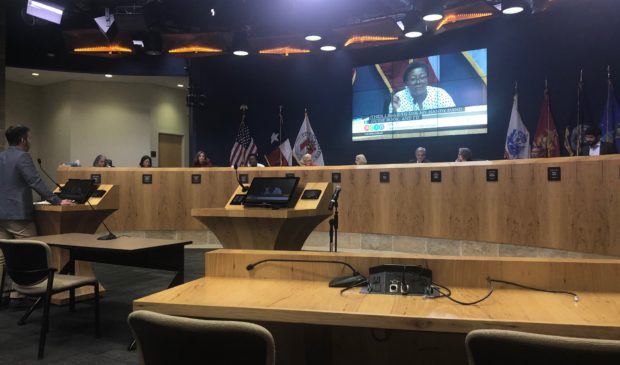Council directs city staff on code rewrite
Friday, May 3, 2019 by
Ryan Thornton Austin City Council has spoken: It wants a new Land Development Code and map to look at and consider for adoption this year, ready to pass on first reading in October.
Council voted during a special session Thursday afternoon to direct City Manager Spencer Cronk and staff to explore writing a new code and draft a zoning map using Draft 3 of CodeNEXT as a baseline document.
The direction was drafted over several weeks of conversation in response to the memo Cronk sent Council members in March, requesting specific language on how a new land use code should address the city’s goals over the coming decades, especially in relation to housing capacity and types, parking, and restrictions on building uses and forms.
Looking back to last summer, when the six-year development code rewrite effort known as CodeNEXT was abandoned, Mayor Steve Adler highlighted that one of the reasons that process failed was a lack of this type of specific, clear direction from Council.
Collectively, Council members spent numerous hours since March discussing and imagining the possible limitations to the responses initially agreed upon to Cronk’s five questions, returning at every opportunity to the specific conditions on the ground that may subvert the city’s attempts to reach housing and transportation goals through sweeping changes to zoning regulations.
Council agrees, for example, that the new code should go beyond Draft 3 in providing for more housing capacity in order to meet the Austin Strategic Housing Blueprint target of adding 135,000 new housing units, including 60,000 income-restricted units, by 2027. Council disagrees, however, on how that goal should be accomplished and how many of those units should be added in the urban core.
In the effort to combat decreasing affordability, Council has also found consensus asking city staff to go further than Draft 3 to write a code that can increase the diversity of so-called “missing-middle” housing types that are smaller and often less expensive than new, single-family homes. Here too, though, there is substantial conflict over the uncertain consequences of steps in that direction, like reducing minimum lot sizes or incentivizing redevelopment of existing housing units.
Acknowledging that increasing the number of units allowed on lots sometimes leads to demolishing older, more affordable units, Council adopted an amendment, proposed by Council Member Greg Casar, to the direction that will prevent mapping upzonings on properties that contain market-rate affordable housing units (accessible to those making 80 percent median family income or less).
Additionally, Council has chosen to ease compatibility standards (limits on use and form of developments based on existing nearby buildings) throughout the city more than was proposed in Draft 3. In particular, Council has found a possible way to drastically increase housing units throughout the city while reducing the percentage of housing added on residential streets by eliminating such standards on parcels fronting activity centers and corridors identified in the Imagine Austin Comprehensive Plan.
In response to Cronk’s final question, Council has decided to ask city staff to consider eliminating parking minimums citywide in areas within a quarter-mile of Imagine Austin activity centers and corridors and along the transit priority network identified in the Austin Strategic Mobility Plan. Council has reiterated many times that there should be consideration of areas where eliminating parking minimums would present a dangerous or undesirable outcome and that parking spaces required by the Americans with Disabilities Act will continue to be required.
Overall, Council members agreed that the new code is necessary and the direction being given is beneficial. Council members Alison Alter, Leslie Pool, Kathie Tovo, and Ann Kitchen, however, expressed concerns about the consequences the document may have if it results in rezoning portions of neighborhoods near major corridors or losing some participation in density bonus programs used to secure affordable housing units.
Council approved the document in an 8-3 vote, with Alter, Pool and Tovo in opposition.
The Austin Monitor’s work is made possible by donations from the community. Though our reporting covers donors from time to time, we are careful to keep business and editorial efforts separate while maintaining transparency. A complete list of donors is available here, and our code of ethics is explained here.
You're a community leader
And we’re honored you look to us for serious, in-depth news. You know a strong community needs local and dedicated watchdog reporting. We’re here for you and that won’t change. Now will you take the powerful next step and support our nonprofit news organization?



